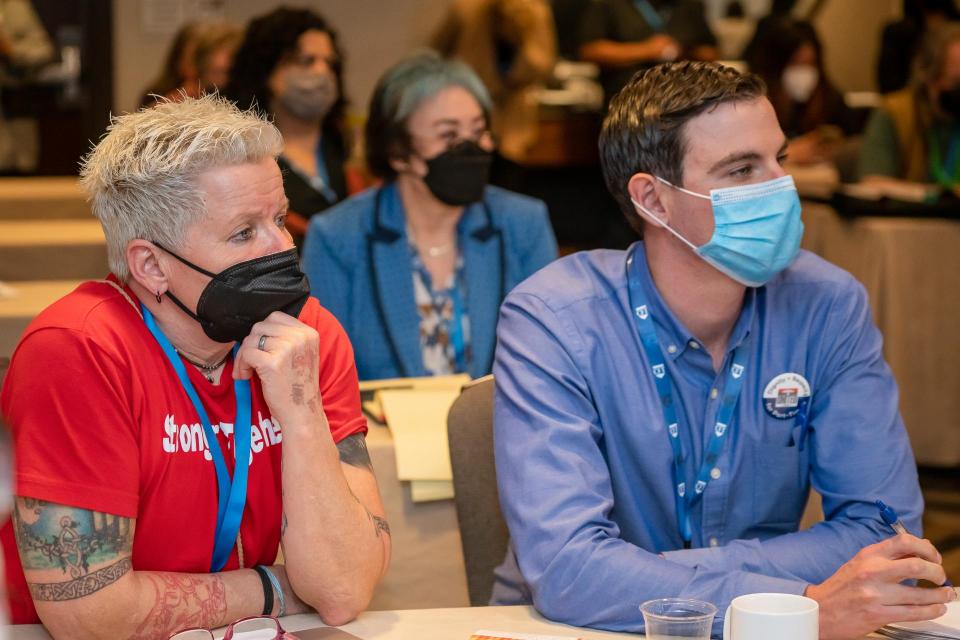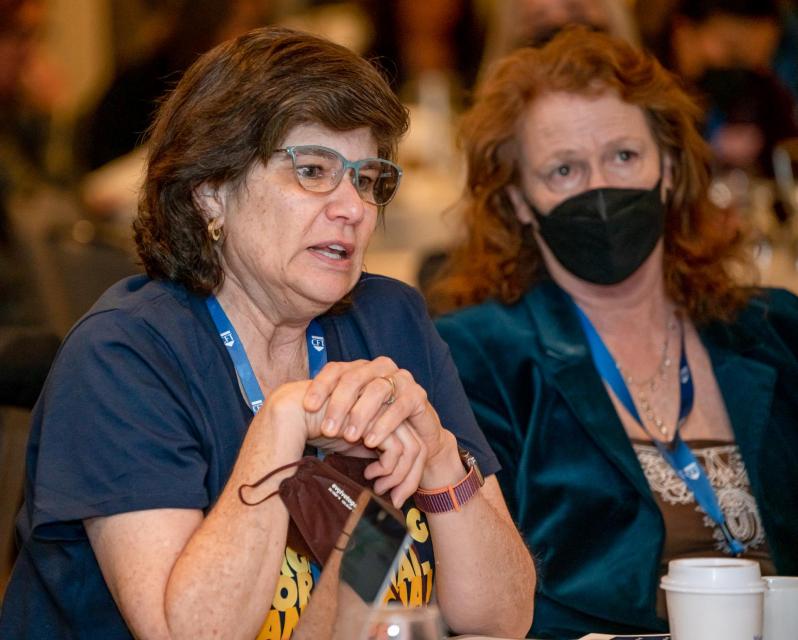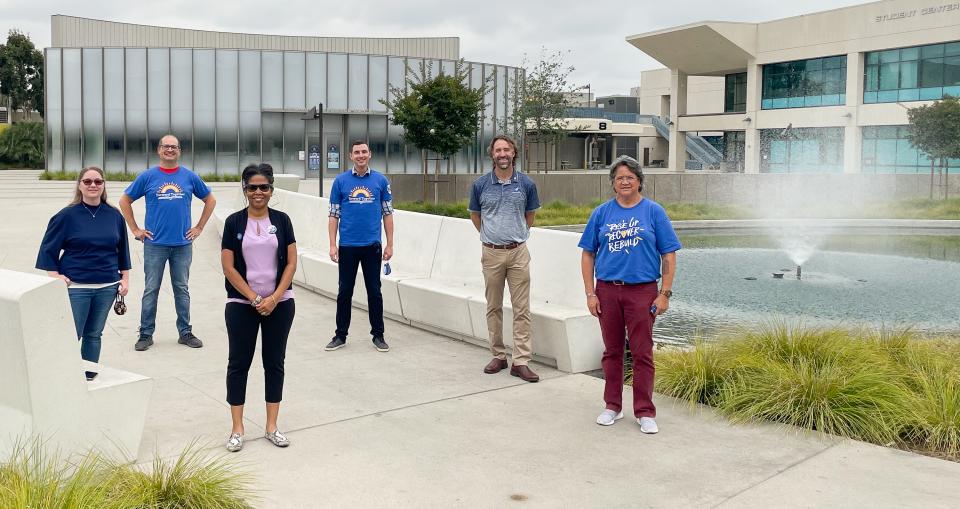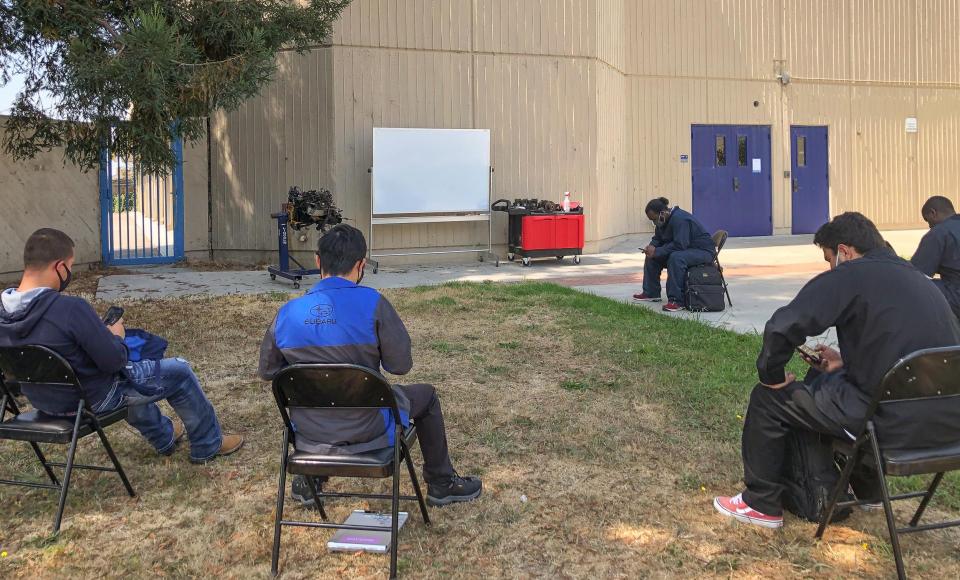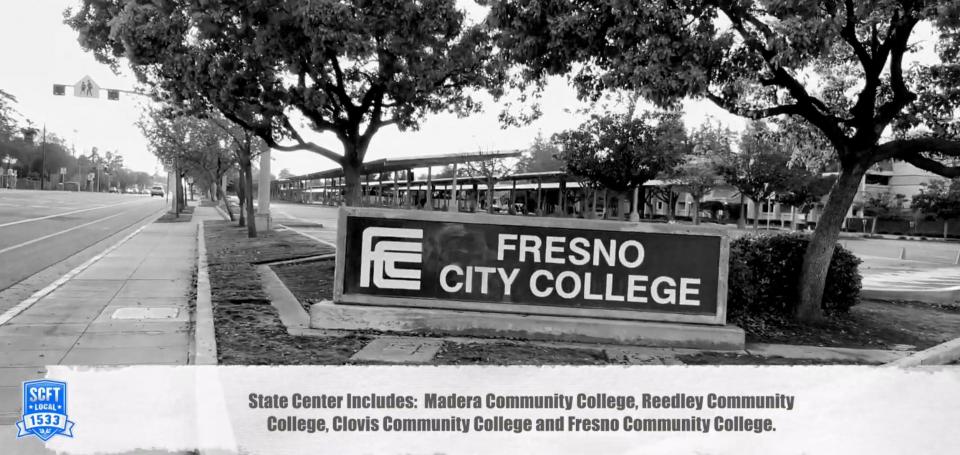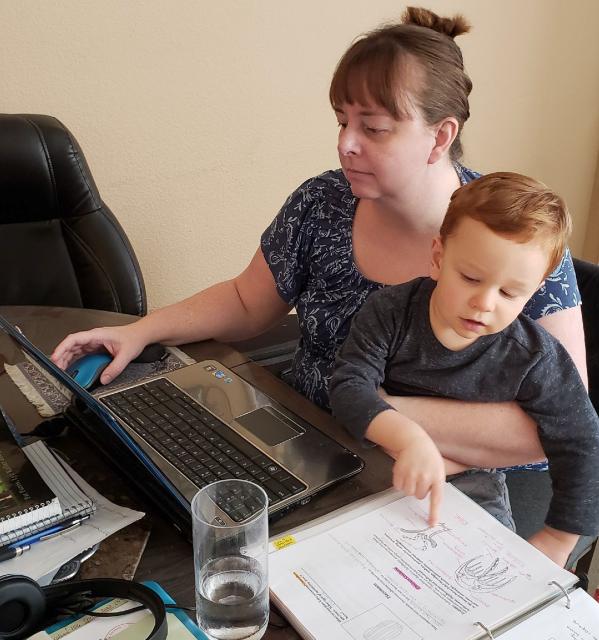While California is showing strong signs of emerging from an economy ravaged by the pandemic, the community colleges are still reeling from the impact, most strongly demonstrated in the sharp decline in student enrollment. This has led to tough situations for many adjuncts, and for the local unions representing them.
According to present data posted on the California Community College Chancellor’s Office website, the period between the fall 2019 and fall 2021 terms saw a decline of 19% in student enrollment, which corresponded to a 10.8% decline, or over 16,000 course sections. During this time the number of part-time faculty declined by 12.2%, equating to 5,186 jobs.
With the spring 2022 term still underway, enrollment figures for statewide and individual districts are not fully known, but reports coming in from AFT local unions point to further troubling numbers despite strong efforts to keep course options open to students and protect part-time faculty.
The Los Angeles Community College District, the state’s largest, saw a fall 2021 to spring 2022 decline of 11.4% or 12,501 students, according to its spring 2022 enrollment report released April 4. In spite of this decline in enrollment, the LACCD increased its number of course sections by 372, revealing a strategy many districts are employing at the moment — allowing classes to run with smaller numbers. The average number of LACCD students per course in fall 2021 was 24.6. This spring that number is 20.1.
Similarly, San Diego County’s Palomar College with the strong encouragement of the Palomar Faculty Federation is also allowing classes to run with as few as 13 students face-to-face, and 15 students in remote format, according to Local 6161 Co-President Barbara Baer. Prior to this semester, the usual class minimum was 20 students.
In general, the policy of running classes with smaller numbers would seem like a fiscal problem in that under normal conditions, that would lead to a decrease in funds since community college funding is attendance-based. What has been an ironic saving grace is the Student-Centered Funding Formula, or SCFF.
SCFF was adopted in the 2018-19 state budget, in an attempt to match funding with student success. SCFF was seen as potentially problematic and led to districts being “held harmless” or being able to retain funding at 2017-18 levels adjusted for inflation until 2025-26. This means that funding for the number of classes offered in 2017-18 is already in place.
With classes effectively “paid for,” this means classes can be offered with lesser financial risk, with other benefits beyond maintaining course offerings for students and preserving part-time jobs. Having these smaller classes go, as Baer explains, “preserves choice and accessibility for students who often have tight or limited schedules, and prevents course offerings from being limited to just a few transfer courses.”
Still, in many cases, the failure of students to enroll still means dramatic cuts, which as Baer noted are “devastating.” Already having dealt with enrollment declines prior to the crisis, Palomar’s enrollment has dropped by over a quarter in the last five years.
The impact on union membership has been particularly felt by Elaine Robinson, president of the Yuba College Federation of Teachers, which represents part-time faculty in the Northern California city of Marysville. Since spring 2020, Robinson reports the local has seen more than 24% of its members dropped from the rolls due to loss of assignments. Even among those members still on the rolls, a significant majority are paying lesser dues as a result of reduced assignments. Robinson said members pay a percentage of dues based on their percentage of a full-time load. From 2020-22, the number of faculty paying quarter dues dropped by 59%, while the numbers of one-eighth dues-payers increased by nearly 600%.
Even senior part-time faculty in local unions with strong rehire rights and seniority language are affected. Long-time Silicon Valley adjunct Jory Segal said, “I do not have a class for the fall and I have the highest seniority of my department.” Since the start of the epidemic Segal’s local, the West Valley-Mission Federation of Teachers, has seen 80 adjuncts lose work as the result of a 21% enrollment decline.
For Adjunct Faculty United, representing part-time faculty in North Orange County Community College District, the downturn in enrollment has meant the loss of 40 adjunct positions. Coupled with a three-week cessation of classes due to the omicron surge, saw even more reduced assignments. “AdFac” is now working with its chancellor to compensate instructors for lost assignments due to omicron.
The local, which experienced a 15% increase in membership last year, is finding that growth helpful. “We are getting stronger as a union,” says AdFac President Seija Rohkea. “Because our membership has grown significantly, the district takes our meetings with the chancellor seriously,” she said. “This helps us continue to get wins for adjuncts.”
The loss of assignments or reduced loads for many part-time faculty has also meant the loss of benefits. The AFT Guild representing staff and faculty in the San Diego Community College District was able to negotiate a deal allowing adjuncts slated to lose their insurance on February 28 to keep their coverage through June 30, and if they are scheduled for classes in the fall, they will be able to retain their benefits through the summer.
— By Geoff Johnson, assigning editor of Part-Timer, member of the CFT Part-Time Faculty Committee and the AFT Guild, San Diego and Grossmont-Cuyamaca Community Colleges

